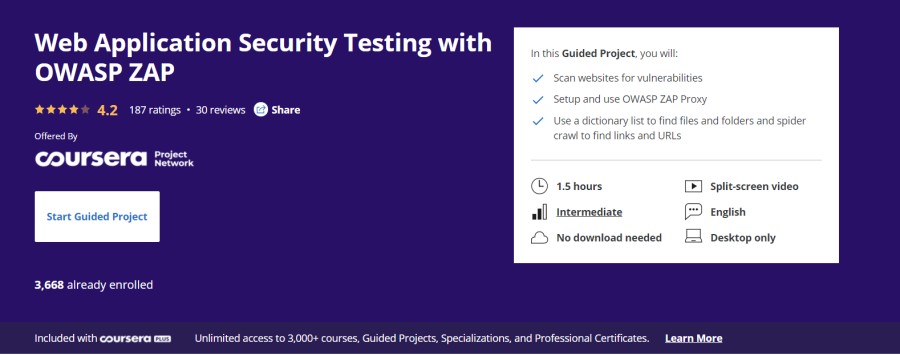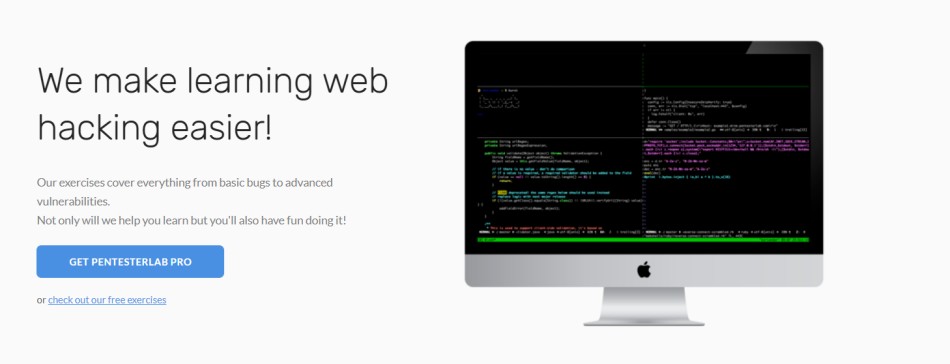Web security is a real deal, and it’s better to acknowledge it sooner than waiting for something bad to happen.
Rapid advancement in technology, including web services and applications, has revolutionized modern businesses. Many businesses have moved their most operations online, allowing employees and business partners from any part of the world to collaborate and share data easily in real-time.
After the modern HTML5 web apps and Web 2.0 were introduced, customer demands changed. Now, everyone wants to access any information they may need 24/7/365. As a result, online businesses are also pushed into making their data available all the time.
While the global lockdown period might have been quite well for those working from home and online retailers, it has also benefited cybercriminals enormously.
The increasing online transactions and remote work allowed them to hack plenty of credit card information and target remote workers and their organizations. This advancement also invited scammers and malicious hackers who are developing new threat vectors now and then.
This year, about 80% of the companies witnessed a surge in cyberattacks, whereas Coronavirus fueled a 238% increase in threats on banks, says a report.
To mitigate all these attacks, Web Application security was born way back. And this industry requires talented professionals who can save organizations from losing data, money, and consumer trust.
This is the aim of this article where you would understand things about security, what is expected of web security professionals, and sources from where you can learn and master the skills.
So, let’s begin?
What is Web Application Security?

Web security, cybersecurity, or web application security is the way of protecting online services and websites from various threats exploiting the vulnerabilities associated with the codes of an application.
Some of the common targets of these attacks are database management solutions like phpMyAdmin, SaaS applications, content management systems (CMS) like WordPress, and more.
Web security aims to prevent such attacks by denying unauthorized access, usage, destruction/disruption, or modification.
So, what’s the reason attackers target web applications widely?
- Application source code’s inherent complexity, increasing the probability of vulnerabilities as well as code manipulation.
- Applications are easy to execute; hence, attackers can launch or automate most of the attacks easily, which can target thousands of applications at a time.
- High-value spoils which include sensitive and private data through source-code manipulation as well as financial spoils
Common types of vulnerability
Cross-site Scripting (XSS)
XSS allows attackers to infuse client-side scripts in a web page, and access important data directly, trick users into disclosing important data or impersonate users. Its consequences include accessing accounts, activating Trojans, changing page content, etc.
Cross-site Request Forgery (CSRF)
CSRF tricks victims where they make a request which utilizes their authorization or authentication. Hence, through these account privileges, attackers can make requests impersonating the user. It could result in funds transfer, password changes, etc.
Denial of service (DoS) & Distributed Denial of Service (DDoS)

Attackers overload the targeted server and/or its infrastructure with various attack traffic. Once the server becomes incapable of processing inkling requests effectively, it starts behaving sluggish and denies service eventually to more incoming requests, even from legitimate visitors.
SQL injection 💉
The method an attacker uses to exploit vulnerabilities similar to the way databases implement search queries. Attackers utilize SQI to access unauthorized data, create or modify user permissions, destroy or manipulate sensitive data, and more.
Remote file inclusion
Attackers use it to inject malicious files with codes into a web app server to execute these codes to harm the application, manipulate it, and perform data theft.
Others
Other attacks include memory corruption, data breach, clickjacking, directory traversal, command injection, butter overflow, and more.
I hope these are enough to understand web security is the need of the hour and why everyone must implement it as soon as possible before it could pose any threat to your application and harm you financially or reputation-wise for that matter.
Due to its growing demands, many people are coming forward to learn. And if you are keen on learning this subject, it could be a great career option and beneficial at the personal level.
What does Web Security Professionals do?

Web security professionals are the ones responsible for protecting web applications, relevant networks, and application data. They help mitigate data breaches by monitoring the network and reacting to threats.
These professionals have backgrounds as network or system administrators, programmers. It’s because this area requires curiosity, critical thinking, passion for research, and learning. They must be able to outsmart hackers who are “destructively creative” in developing and injecting various threats.
As security threats may pop up any time, security professionals must stay updated with all the latest tactics hackers employ to sneak into systems and networks. Some of the responsibilities of web security professionals are:
- Find vulnerabilities in web applications, databases, and encryption.
- Mitigate attacks by fixing security issues
- Perform audits periodically to ensure best security practices
- Deploy endpoint prevention and detection tools to prevent malicious attacks
- Implement systems for vulnerability management across assets in the cloud and on-premises
- Handle clean-up in case attacks happen
- Work with other IT operations to plan disaster recovery.
- Work with team leads and HR to educate all the employees to detect suspicious activities.
Some best security practices to secure web applications
Using web application firewalls (WAF)

WAF helps in protecting your web applications from malicious HTTP requests. It places a barrier between the attacker and your server. It can protect layer seven against threats like XSS, CSRF, SQL injection, etc.
DDoS mitigation
As the name suggests, it is used to mitigate application DDoS and network layer attacks, thus, securing websites, applications, and server infrastructure.
Bot 🤖 filtering

It is implemented to filter out bad bot traffic.
DNS protection
It is done to protect your DNS request from getting hijacked through on-path attacks and DNS cache poisoning.
Using HTTPS
HTTPS encrypts all the data exchanged between the server and your client to protect login credentials, header information, cookies, request data, etc.
So, if you have made up your mind to learn web application security, you can refer to the following learning resources and sharpen your skills 🧑💻.
PortSwigger

Learn from the makers of Burp Suite – a leading platform for a variety of cybersecurity tools by PortSwigger. It is an online and FREE training that can boost up your career in cybersecurity.
With interactive labs, you can learn anytime and from anywhere plus track your progress over time. It provides training in business logic vulnerabilities, information disclosure, web cache poisoning, insecure deserialization, SQL injection, XSS, CSRF, XXE injection, and more.
PortSwigger’s learning materials are made by experienced professionals, research team, and their founder – Dafydd Stuttard. He is also the author of a famous book called the Web Application Hacker’s Handbook.
The tutorials are explained comprehensively in the text and video content to help remember key points easily. Their interactive labs make the overall course exciting, and it’s where they ask realistic puzzles to test your hacking skills.
EdX
Web Security Fundamentals by EdX is great for understanding the basic principles. It provides you with an overview of common attacks and countermeasures suitable for each of them only theatrically and practically.
They also teach you the best security practices prevailing currently to secure web applications. If you want to join the course, you need no prior security knowledge necessarily. But if you do, it will help you a lot to understand things better like HTTP, JavaScript, HTML, etc.
The course length is 5 weeks, which includes 4-6 hours a week. It is completely FREE to learn; however, if you want, you can pay US$ 48.97 to get a verified and instructor-signed certificate with a logo of the institution on it. This certificate can be used to increase job prospects, and is shareable on LinkedIn or can be incorporated on your resume or CV.
Stanford
The CS 253 Web Security course by Stanford offers the complete web security summary and aims to make the students understand the common web attacks and how to prevent them. The course covers not only the fundamentals but also the advanced leanings in web security.
Some of the topics include:
- Web security principles
- Attacks & countermeasures
- Web application vulnerabilities
- Browser security model
- Injection, DoS, and TLS attacks
- Fingerprinting, privacy, same-origin policy, authentication, cross-site scripting, JavaScript security
- Defense-in-depth
- Emerging threats
- Techniques to write secure codes, security exploits
- Implementing evolving web standards and defending weak web apps
For taking up this course, you must have undergone CS 142 or any other equivalent experience in web development. Here, attendance is mandatory, and grading is based on:
- 75% on assignments
- 25% on the final exam
To prepare better, you can read the solution for the Final Exam 2019 and other sample questions for CS 253.
Beginner’s friendly

Undoubtedly, Udemy is one of the best places to study online for various courses; web application security is one of them. If you are a beginner, this course is great for you, as it requires no prior coding knowledge.
In this course, you would learn:
- Identification of best 10 threats detected by OWASP or the Open Web Application Security Project
- Understanding how these threats can be mitigated
- Impact of each threat on your business
- How attackers execute these threats
The course is explained in the easiest language so everyone with little information on the internet and the computer can understand it. It also covers in-depth defense, an explanation for spoofing, information disclosure, tampering, repudiation, the elevation of privilege, and DoS.
Experienced tutors are there to teach you everything you need to master the basics of web security.
Coursera

Another very good option in the list is Coursera, which teaches how you can use OWASP ZAP or Zed Attack Proxy. This tool helps security professionals as well as penetration testers in finding vulnerabilities.
- They teach how you can scan for vulnerabilities, analyze scan results, generate reports out of them, etc.
- You will also learn browser proxy configuration to scan responses and requests passively by exploring websites.
- A brief explanation of how to view, intercept, forward, and modify web requests occurring between the web application and the browser.
- Furthermore, you will learn to utilize dictionary lists to find folders and files on your web server.
- Besides, you could understand how you can spider crawl sites to find URLs and links.
The course instructors guide you step-by-step each topic in the split-screen video, and since it’s on the cloud, you don’t have to waste time downloading. Coursera provides certificates included for every program without additional cost.
PentesterLab

PentesterLab covers from basics to advanced levels. They teach you how to find and then exploit vulnerabilities manually. All their exercises cover common weaknesses or issues found in various systems.
For better learning, they provide real systems and real vulnerabilities so you can learn in real-time, with no emulation. Their online exercises let you obtain certificates post-course completion. All the exercises are divided into badges which you can finish to avail of the certificate.
YouTube
YouTube is the hub for knowledge; you just have to use it the right way!
So, there is a channel – Google Chrome Developers with 505k subscribers on YouTube that you can look up to learn.
In this tutorial, you can understand some typical attack vectors and how you can protect your data, users, and reputation. Next, you will be introduced to a new course which is aimed at providing concise lectures and hand-on exercises on topics including both defense and attack.
Mozilla
Turn up to MDN web docs by Mozilla and access useful articles on web security. The articles listed here cover a variety of topics like content security, connection security, data security, information leakage, data integrity, clickjacking protection, user data security, etc.
The information from these articles will help you protect your website and all its codes against data theft and attacks. You can learn some interesting things like how you can fix your site, having blocked mixed content, about signature algorithms, and more.
Netsparker
A comprehensive article by Netsparker is apt at explaining the nitty-gritty of web application security. It is excellently written to help even beginners understand the terms and technologies used in web security.
In the article, the myths and basics of web app security, are explained and how present-day businesses can enhance their website and application security to keep cyber attackers at bay.
Here, you will learn:
- How to secure your web applications
- Selecting the right vulnerability scanner
- Difference between free vs. commercial web vulnerability scanner
- How you can test your vulnerability scanner and when to use it
- Some best practices to secure your web server as well as other components
SANS

Take up this course – SEC22 from SANS if you aim at defending web applications. It will assist you in understanding all the security vulnerabilities associated with your web application so you can protect your web assets.
The course introduces you to mitigation techniques for architecture, infrastructure, and coding alongside real-world methods. You will become familiar with the nature of these vulnerabilities to understand why they happen and how to mitigate them.
It is suitable for people who are responsible for managing, implementing, or defending web applications. It may include app security analysts, architects, developers, audits, pen testers, etc.
The course will cover topics like:
- OWASP best 10 threats
- Specific issues from CWE top 25 software errors
- Integrating cloud in a web app
- App language configuration
- Infrastructure configuration and security management
- Authentication mechanisms
- HTTP headers
- Flaws in business logic
- Coding errors like XSS, CSRF, SQL injection, etc.
If you understand the basics of web app concepts and technologies like JavaScript and HTML, you are good to go with the course.
Cloudflare
This is another article in the list by Cloudflare which covers things about web application security.
Precisely, it explains:
- What the meaning of this terminology is,
- Some typical vulnerabilities, and then
- Best practices to prevent web security vulnerabilities
Read this article to clarify some basic concepts which will help you a lot when you enroll for a web application security program.
Conclusion
Learning web application security has become crucial as the cyberattacks are increasing rapidly.
All the best!



